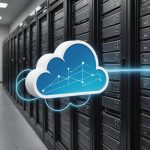Unlocking the Secrets of Serverless Monitoring and Logging: Your Ultimate Guide to Successful Implementation
In the ever-evolving landscape of cloud computing, serverless architecture has emerged as a game-changer, offering scalability, cost-efficiency, and reduced administrative burdens. However, the lack of direct access to the underlying infrastructure in serverless environments presents unique challenges, particularly when it comes to monitoring and logging. In this guide, we will delve into the world of serverless monitoring and logging, providing you with the tools, best practices, and practical insights necessary to ensure your serverless applications run smoothly and securely.
Understanding the Importance of Monitoring and Logging in Serverless Architecture
Monitoring and logging are crucial components of any application, but they become even more critical in a serverless architecture. Here, you don’t have the luxury of logging into servers or containers to diagnose issues. Instead, you rely on logs, metrics, and telemetry to understand what’s happening within your application.
Also to see : Transforming telemedicine: innovative approaches to seamless ai integration
“Without sufficient logging, it’s often difficult to diagnose issues in the system,” notes an article on debugging AWS Lambda functions in production[4]. This underscores the need for robust monitoring and logging strategies.
How Serverless Monitoring Works
Serverless monitoring involves collecting, analyzing, and acting on data from your serverless functions. Here are the key components:
In parallel : Boost productivity with an ai admin assistant for your business
Logs
Logs are the most familiar part of serverless monitoring. They provide statements of facts about what happened within your application, such as errors encountered, user interactions, or system events. In a serverless context, logs are often managed through cloud services like AWS CloudWatch or Google Cloud Logging.
For example, AWS CloudWatch Application Signals integrates logs, metrics, and traces to provide a comprehensive view of your application’s performance. This allows you to “visualize the complete application topology from the Service Map and quickly spot anomalies across your service’s individual operations and dependencies”[5].
Metrics
Metrics provide quantitative data about your application’s performance. In serverless environments, metrics can include the number of requests, latency, faults, and errors. Amazon MSK, for instance, publishes metrics to CloudWatch, allowing you to monitor Kafka clusters in real-time. Metrics such as BytesInPerSec, BytesOutPerSec, and MessagesInPerSec help you understand the throughput and performance of your Kafka topics[3].
Telemetry
Telemetry involves sending detailed, real-time data about the behavior of your application. This can include information about which parts of the application are being invoked, such as database commits or message queue interactions. In serverless observability, telemetry is crucial for understanding the flow of your application and identifying bottlenecks or issues.
“By leveraging Python’s robust ecosystem and the inherent capabilities of serverless infrastructure, developers can create highly observable systems that offer deep insights into application performance and behavior,” explains an article on enhancing serverless observability with Python[2].
Best Practices for Serverless Monitoring and Logging
Implementing effective monitoring and logging in a serverless environment requires careful planning and adherence to best practices. Here are some key strategies:
Centralized Log Management
Centralizing your logs is essential for efficient monitoring. Instead of scattering logs across different platforms and systems, use a centralized log management solution. This simplifies monitoring, searching, correlation, and analysis of logs.
“For instance, AWS CloudTrail aggregates logs from resources like EC2 instances or S3 buckets, giving teams visibility into system activities and resource changes,” highlights a guide on audit logs[1].
Regular Monitoring
Consistently monitor your logs to detect anomalies, unusual access patterns, or suspicious activity. Tools like Middleware allow you to monitor logs in real-time and receive alerts to quickly resolve issues before they escalate[1].
Implement Access Control
Limit who can view or modify logs to prevent misuse. Restrict access to key personnel, such as administrators, to minimize the risk of internal tampering or accidental deletions.
Use Observability-Driven Development
Design your applications with built-in monitoring, logging, and telemetry from the start. This approach, known as observability-driven development (ODD), ensures you can proactively identify and address issues, improving the reliability and performance of your serverless functions[2].
Tools and Services for Serverless Monitoring and Logging
Several tools and services are available to help you monitor and log your serverless applications effectively. Here are a few notable ones:
AWS CloudWatch Application Signals
This service automatically correlates telemetry across metrics, traces, and logs, speeding up troubleshooting and reducing application disruption. It is particularly useful for AWS Lambda functions, allowing you to monitor performance metrics like request volume, latency, faults, and errors without manual instrumentation[5].
AWS Lambda Extensions
For AWS Lambda functions, extensions like the Lambda logger extension can be used to add logging without redeploying the function. This extension logs requests and responses dynamically, making it easier to troubleshoot production issues[4].
Amazon MSK with CloudWatch
Amazon MSK integrates with Amazon CloudWatch to collect, view, and analyze metrics for your Kafka clusters. This integration provides detailed metrics on topics, consumer groups, and cluster performance, helping you monitor and optimize your Kafka setup[3].
Use Cases and Practical Examples
Here are some practical examples and use cases to illustrate the implementation of serverless monitoring and logging:
Monitoring API Performance
Imagine you have a serverless API built using AWS Lambda and API Gateway. To monitor its performance, you can use AWS CloudWatch Application Signals to collect metrics on request volume, latency, and errors. This allows you to visualize the API’s performance in real-time and identify any bottlenecks or issues promptly.
Logging in AWS Lambda
For an AWS Lambda function, you can use the Lambda logger extension to log requests and responses without redeploying the function. This is particularly useful in production environments where you need to troubleshoot issues quickly without disrupting the service[4].
Compliance and Security
Audit logs are essential for ensuring compliance with regulatory requirements such as GDPR or HIPAA. By tracking changes to user accounts or sensitive data access, you can ensure your serverless applications adhere to strict security controls and privacy regulations[1].
Table: Comparing Key Monitoring and Logging Tools for Serverless Applications
| Tool/Service | Description | Key Features | Use Cases |
|---|---|---|---|
| AWS CloudWatch Application Signals | Automatically correlates telemetry across metrics, traces, and logs | Real-time monitoring, performance metrics, anomaly detection | Monitoring AWS Lambda functions, API performance |
| AWS Lambda Extensions | Adds logging to AWS Lambda functions without redeployment | Dynamic logging, request/response logging | Troubleshooting production issues in AWS Lambda |
| Amazon MSK with CloudWatch | Collects, views, and analyzes metrics for Kafka clusters | Topic-level metrics, consumer group metrics, cluster performance | Monitoring Kafka clusters, optimizing Kafka setup |
| Middleware | Centralized log management and real-time monitoring | Log aggregation, anomaly detection, real-time alerts | Centralized log management, security monitoring |
Monitoring and logging are vital components of any serverless architecture, enabling you to ensure the health, security, and performance of your applications. By understanding the importance of these practices, leveraging the right tools and services, and adhering to best practices, you can unlock the full potential of your serverless applications.
As you embark on your serverless journey, remember that “designing for observability is achievable and highly beneficial. By ensuring your serverless applications are observable from the start, you can save time and add significant value to your projects”[2].
With the right approach and tools, you can harness the power of serverless computing while maintaining the visibility and control you need to succeed in the cloud. Whether you’re using AWS, Google Cloud, or another cloud provider, the principles of effective monitoring and logging remain the same: centralize your logs, monitor regularly, implement access control, and use observability-driven development.
By following these guidelines and leveraging the tools and services available, you’ll be well on your way to building robust, secure, and highly performant serverless applications that meet the demands of your business and users.











